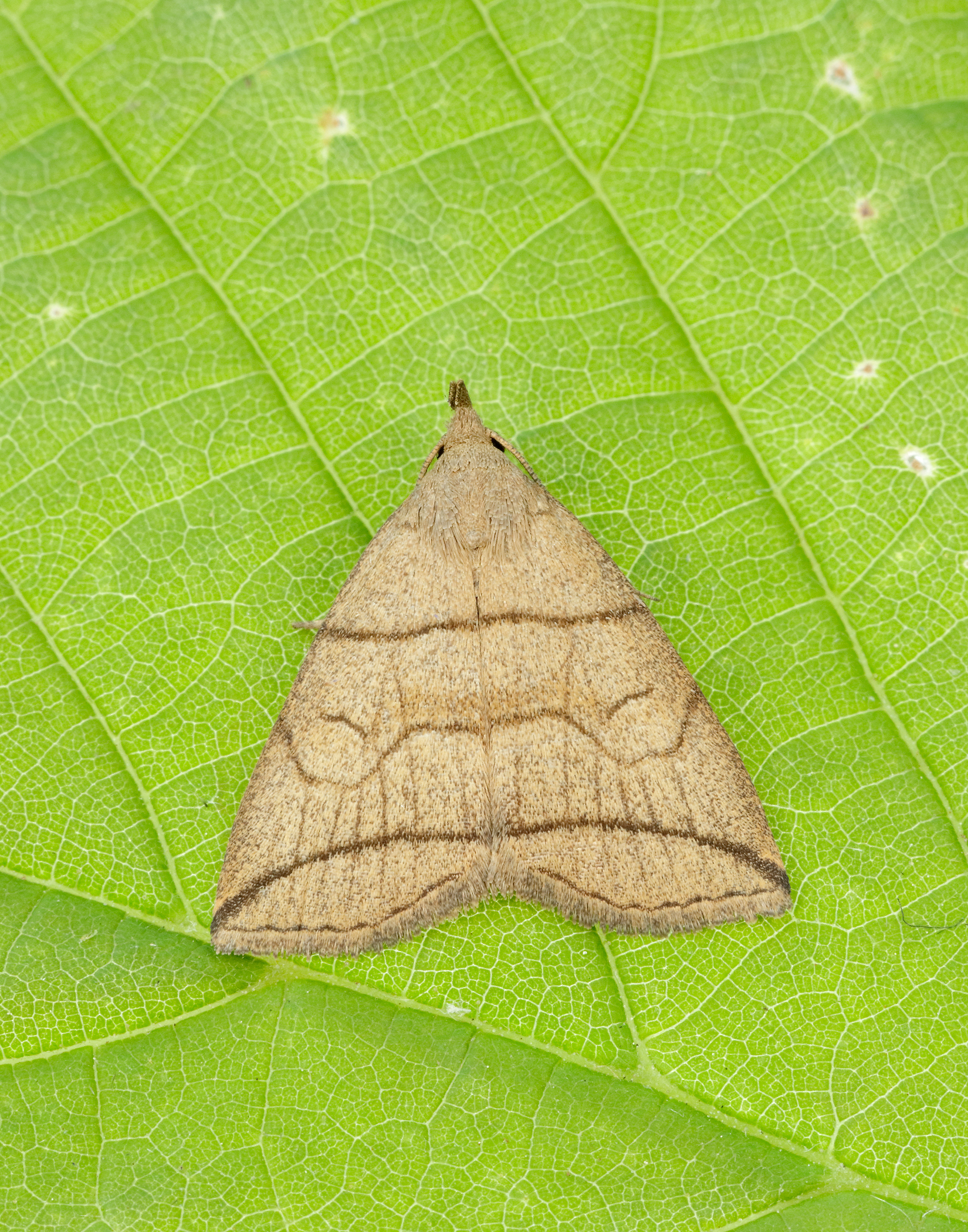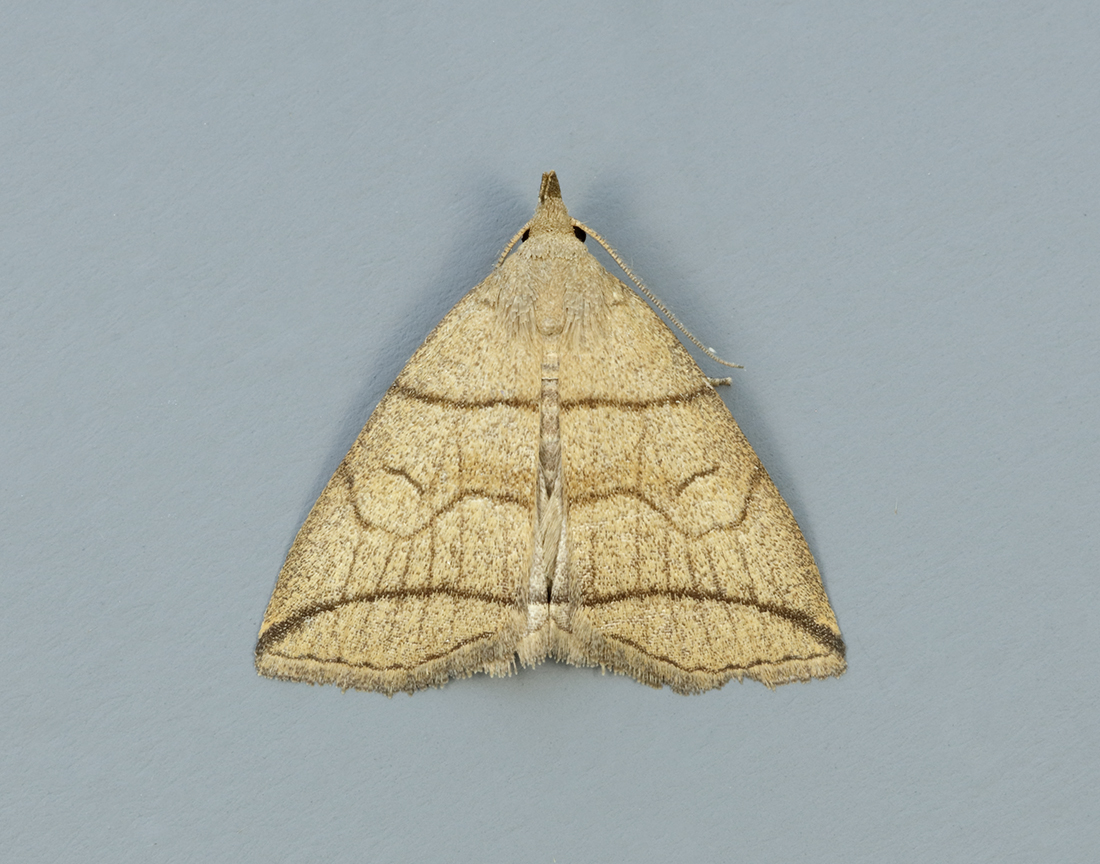Identification
The third cross-line that is curved and reaches the apex, together with its smaller size, separates it from all other ‘fan-foots.’
Life cycle
One generation. Overwinters as a pupa, in a cocoon. Larvae are present from July to October.
Larval foodplants
Larvae feed on withered leaves on the ground or healthy leaves attached to the trees of Alder, Bird Cherry, Bramble, Downy Birch, Hawthorn, Hazel and Pendunculate Oak.
Habitat
Broadleaved woodland, hedgerows and gardens.
History 1860-2010
K. J. Morton of Edinburgh (1900) while on a visit in July 1899 to Wigtownshire had found this species in the Monreith area. Gordon (1919) had found it to be rather scarce, but widely distributed at Corsemalzie, Alticry and Portpatrick, Wigtownshire, at dusk in woods and on ivy. Earliest date was 14th June 1911.
Sir Arthur Duncan (1909-84) during his lifetime had found it at Tynron (VC72).
During 1974-93 there 230 records from all seven Rothamsted stations, proving it a widespread moth.
From 1993 to 2010 the regular trapped sites at Cally Woods (66 records) and Kirkton (20 records) provided half of the 170 records during the period, with the rest from widely scattered sites across the region.









